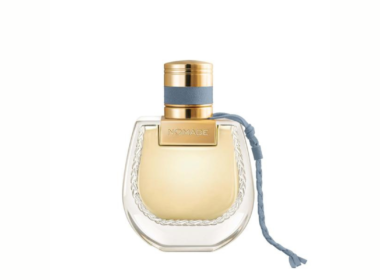Growing up in Paris, Romain Japy was surrounded by innovation and creativity. His father was building one of the first video-on-demand companies, and Romain vividly recalls the moment when a major distribution deal brought his father’s vision to life. “That’s when I first understood the thrill of innovating,” Romain reflects. “I saw how working on something completely new could bring so much excitement and joy.” Meanwhile, his mother, a passionate professional in the fashion industry, instilled in him the importance of finding a personal passion and making it his own. Together, these influences shaped the foundation of Romain’s future path.
Romain pursued his studies in the UK before returning to France to attend ESSEC, where he joined the prestigious LVMH Chair. At his interview, when asked about his ideal role within the luxury group, Romain gave a unique answer: service provider. “I was the first to ever say that,” he recalls. “It reflected my desire not just to fit in, but to bring brands to a place where they could truly connect with my generation.”
Still unsure of his ultimate direction but eager to build something impactful, Romain took a brief detour into finance. It was a strategic move, giving him access to a broad spectrum of industries and trends—including the burgeoning metaverse. At the time, companies like The Sandbox were making headlines, securing deals worth hundreds of thousands of dollars as brands scrambled to enter the new digital frontier. Romain quickly recognized an opportunity to bridge the gap between this emerging web revolution—often dominated by older players—and brands seeking relevance in a rapidly changing world. Together with his co-founder, he began consulting for major luxury houses, helping them navigate the buzz around the metaverse, crypto, and NFTs.
“We found ourselves in spaces we never expected, like organizing talks for the boards of directors at Chanel and Kering,” Romain shares. “Through these experiences, we gained a deep understanding of their challenges and what was missing from the so-called ‘metaverse’ solutions on the market.” It was this insight that led to the creation of The New Face, a venture that aims to redefine how brands engage with the digital future.

The Vision Behind The New Face and Immersive E-Commerce
FAB: Can you explain the core concept of The New Face and how it differentiates from traditional e-commerce platforms?
Romain Japy: One interesting trend in recent years is the emergence of e-retailers like Net-a-Porter and Farfetch. These platforms reflect a shift in how we view the web and online shopping. The model has been simple: pay to get views. This evolved into the influencer model, where third parties began generating traffic and monetizing that too. As everyone jumped on the monetization bandwagon, it led to inflated costs.
Now, it’s much more expensive for brands to stand out. For example, Google ads have become costly, and generating engagement with influencers is no longer as effective. Interestingly, in the real world, we don’t see this trend. If people want a Prada product, they prefer going to a Prada store rather than buying it at a department store like Galeries Lafayette. Why? It’s the experience they get at the Prada store, which justifies the high price tag.
This is reflected in a curious trend online: luxury brands often have lower customer satisfaction (NPS) after a purchase compared to Amazon. Despite offering some of the world’s most desirable products, they’re not as satisfying to shop with online. This puzzled us, so we started thinking about how we could create a richer experience on the website, one that goes beyond just a transaction.
Recommended For You
4 Common Shopping Fallacies and How to Avoid Them
Unlock the Future of Fashion Retail: How Tech is Transforming Shopping Experience
We had some discussions with Gregory Boutte, the new head of digital at Gucci. He mentioned that to rebuild the brand’s desirability, he plans to discourage online purchases and push customers toward physical stores. This got us thinking: the way brands currently handle e-commerce is diluting their brand identity. They’re trading off some brand value for higher revenue. Our goal is to balance this by offering a luxury brand experience on the brand’s own website. It may not be the most efficient conversion engine, but it will create a stronger perception of the brand. If a customer has a better experience on a brand’s website, they’re more likely to visit the store or return to the website. We still need to prove this, but we’re hopeful it will work, especially with Jaden Smith’s Harper Collective release.
FAB: You’ve introduced “immersive e-commerce” and gaming mechanics to online shopping. How do these features enhance the user experience?
Romain Japy: Immersing the user in an environment is something brands have done traditionally in retail, at runway shows, and exhibitions. This approach highlights the brand’s elevated design and creates associations with renowned architects and designers—something that’s harder to achieve digitally. The gaming mechanics, on the other hand, serve the brand by increasing awareness and engagement. It helps users better understand the brand while offering an interactive experience. As we popularize these features, we may discover that gaming mechanics can drive conversions. For example, just like when brands offer promo codes on their websites, we could introduce them through a game. This would encourage users to spend more time with the brand, increasing the likelihood of conversion.

FAB: With immersive technologies and AI becoming essential, how does The New Face leverage these tools to shape the future of luxury e-commerce?
Romain Japy: We haven’t fully embraced AI yet, but we’re conscious of one of its consequences: the flood of content. Platforms like Instagram are already overflowing with AI-generated content, and I believe people will start shifting away from platforms that offer only AI-created material, especially as regulations come into play. Eventually, users will scroll through their feeds and see labels like “made with AI,” prompting them to reconsider how they consume content. Younger generations, like those already immersed in platforms like Roblox or GTA, are accustomed to in-game ads and commerce. I think this type of media offering—one that provides a deeper, more interactive experience—will define the future of advertising.
FAB: You have worked with brands such as Pucci, Cartier, and MCM. How were you able to get the attention of these luxury brands, and what is your mindset going into such projects?
Romain Japy: We caught the attention of these luxury brands because we were young and had a strong understanding of 3D aesthetics. We entered the scene just after Jacquemus had done their viral ad, and we quickly proposed similar ideas to brands. We knew exactly how it was done; it wasn’t as complex as people thought. I think that’s what sparked their interest—young people who could handle advanced tech with ease. For us, what others saw as hard-core technology was just another skill. That’s how we gained access to key contacts.
Our mindset going into projects is natural and collaborative. If we grasp a concept well, we position ourselves as the audience and aim to create something that resonates with us first. We’re not afraid to call out when something feels off, whether it’s a concept or a video. If we can create something that we connect with, it’s more likely to resonate with our generation—and surprisingly, even older audiences. Never miss a beat in fashion, arts, beauty, and lifestyle, follow FAB L’Style Magazine.


FAB: What are some challenges in creating interactive 3D models and environments, and how do you ensure they reflect a brand’s identity?
Romain Japy: The first major challenge was ensuring the quality was high enough to meet the expectations of luxury brands that invest millions in refining their image. We spent a year and a half researching the right technology to render garments, animations, and characters in a way that satisfied their standards. Now that we’ve overcome that hurdle, the challenge is sparking the imagination. Brands have been running successful campaigns for years, and there’s little incentive for brand managers to take risks, especially in times of economic downturn. Everyone is focused on cutting costs to improve margins, so bold moves aren’t high on the agenda. That’s why sparking the imagination is key, and it’s great to be surrounded by people like Sebastian (Co-Founder of Harper Collective) and Jaden (Smith), who are bold and eager to push boundaries.
Romain Japy: Initially, the goal was to translate something very natural—shopping with friends—into the digital space. Personally, I never go shopping alone; it feels depressing to me. So, we wanted to replicate the experience of chatting with a friend about the products you see and the overall shopping experience. This can significantly impact e-commerce dynamics by potentially doubling the average basket size. When a customer invites a friend, that friend is likely to make a purchase too, especially if they see their friend buying a lot. It’s a natural reaction: when your friend gets something, you want your own beautiful item to take home as well. We’ve designed this as a controlled multiplayer environment, where you can only invite friends, avoiding random people joining your session.

How The New Face Balances AI, Personalization, and Privacy
FAB: What role does customer data play in refining the shopping experience on The New Face, and how do you balance personalization with privacy?
Romain Japy: We’re currently conducting an experiment, and theory usually follows the data. Our goal is to first gather data to understand how users behave in this new shopping environment. This will help us create the templates of tomorrow, similar to what Shopify did, by identifying which user journeys lead to higher sales. As you mentioned, personalization is key. We aim to offer personalized merchandising within the world, but this doesn’t alter the overall template or flow—it only changes what users see at each stage. We’re not collecting more data than brands already do. Instead, we connect to the brands’ existing databases and use that data to enhance the store’s merchandising. The only additional data we collect, compared to traditional 2D e-commerce, is a heatmap to understand where people stand within the environment. But overall, the personalized experience will be more significant in this world, as users will appreciate seeing a world tailored to their preferences, rather than just a generic product list.
FAB: Which industries do you see benefiting the most from your immersive, virtual world approach?
Romain Japy: Any industry where the brand’s identity makes up a large portion of the product’s value will benefit significantly from our solution. They’ll be able to engage in e-commerce without compromising their brand’s integrity.
FAB: How do you foresee The New Face evolving in the next five years, particularly in the realm of AI and virtual reality?
Romain Japy: Over the next five years, our focus will be on enabling that artistic landscape. Our ambition is for any brand owner, even someone launching a small brand—like my cousin, who’s selling sweaters—to be able to import their products into our world and create an immersive experience for their brand. Whether it’s a small startup or an established brand, the idea is to allow designers to present their first collection within an environment that aligns with their vision. Young designers often don’t have access to such platforms, and while they might be able to showcase a collection in a temporary showroom, our goal is to make that showroom a permanent feature on their website, enabling them to tell their brand story in a compelling way.











